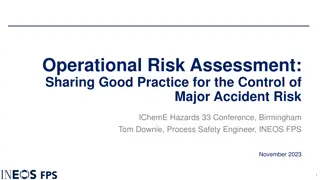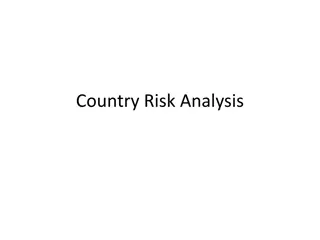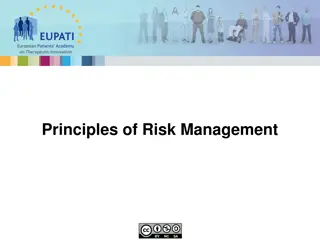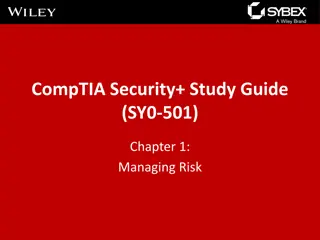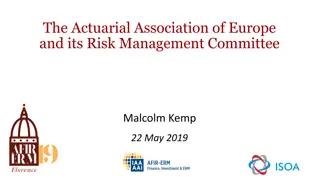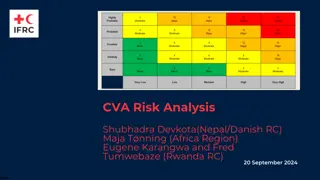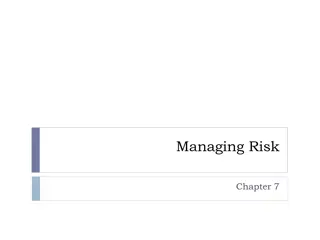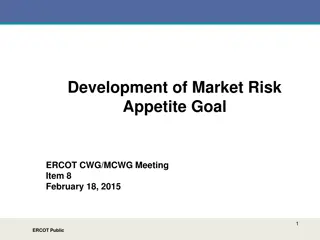
Effective Risk Management Strategies for Financial Stability
Discover the ins and outs of the new risk management landscape, from leveraging financial markets to employing dynamic hedging techniques. Explore the importance of hedging, types of risks to consider, and accounting nuances in this comprehensive guide presented by experts in the field.
Download Presentation

Please find below an Image/Link to download the presentation.
The content on the website is provided AS IS for your information and personal use only. It may not be sold, licensed, or shared on other websites without obtaining consent from the author. If you encounter any issues during the download, it is possible that the publisher has removed the file from their server.
You are allowed to download the files provided on this website for personal or commercial use, subject to the condition that they are used lawfully. All files are the property of their respective owners.
The content on the website is provided AS IS for your information and personal use only. It may not be sold, licensed, or shared on other websites without obtaining consent from the author.
E N D
Presentation Transcript
The New Risk Management The Good, the Bad, and the Ugly Author : Philip H. Dybvig, Pierre Jinghong Liang, and William J. Marshall Presented By: Yiji Gu
New Risk Management New VS. Old Old Buy corporate insurance Avoid lawsuits and accidents Install safety equipment New Use financial markets to hedge against interest rate risk, currency fluctuations etc
Tools for hedging Options Black-Scholes model Matching beginning value and ending value Losing money in good times and making money in bad times
Example Unhedged Cash Flows Naive Hedge Fully Hedged
Example Price Dynamics
Example-Dynamic Hedging Reinvestment rate Reinvested proceeds of the hedge + original cash flow is the same in every contingency
Four Questions to ask Why should we hedge? What risk should we hedge? With what instrument should we hedge? Support your investment banker
Why should we hedge Reduce the volatility of the value received by shareholders Avoid potential ancillary damage within the firm. i.e. bankruptcy, increase tax A policy of smoothing earning Give managers incentives to produce profits
What risks should we hedge i.e. interest rate risk Directly hedge the mismatch of existing assets and liabilities Or hedge the full economic value that includes the value of future business Hedge cash flows or value
Accounting issues Hedge accounting treatment Fair value hedge VS Cash flow hedge Conditions Failure to qualify as a hedge often penalize true economic hedging Hedges that are economically equivalent may have very different accounting treatment
Cost Transaction cost Liquid market Custom contracts Marginal cost Spot market price
Risk Management Policy Control system Goals of hedging program Ex post evaluation




